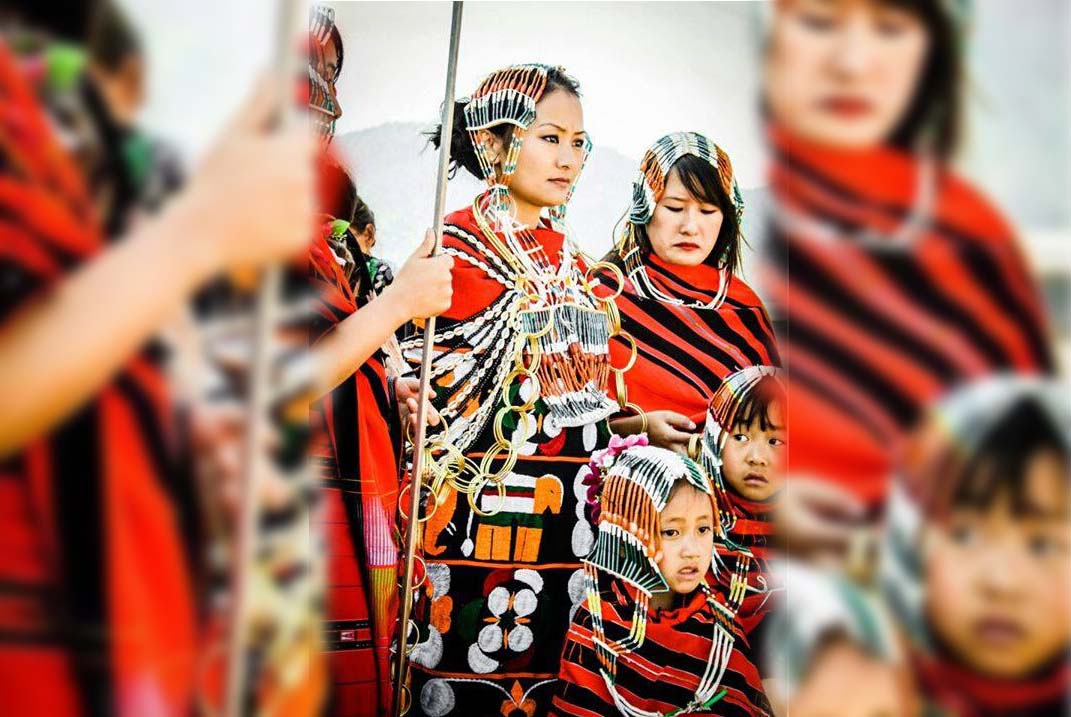The folklore of the Tangkhuls once teemed with a myriad of spirits ranging from benevolent to malevolent. Besides their creator-god, who is known by many names such as Ameowo, Zinghungleng, Reisangchonme, Kasa-Akhava, and others, these spirits, also known as Kameo, resided in nature and were known to have been involved with humans more than the creator-god, Ameowo. Ameowo is said to have resided in the heavens which was beyond the realm of human reach. While the kameos resided on Earth along with the humans, they interacted and were known to have revealed themselves to only a selected few.Most of the folklore of the Tangkhuls is yet to be recorded and written for the perusal of all but many have been passed down orally, like most folklore is. However, one cannot deny that there is a root of deep ecology in the folklore of the Tangkhuls. Britannica defines deep ecology as an “environmental philosophy and social movement based in the belief that humans must radically change their relationship to nature from one that values nature solely for its usefulness to human beings to one that recognizes that nature has an inherent value.” The phrase “Deep Ecology” was coined in 1972 by the Norwegian philosopher and environmentalist, Arne Dekke Eide Naess. He called for “the reorientation of human values that would prefer biocentrism and embrace the co-existence of eco-diversities.” The principles of deep ecology dislodge the worldview that man is above nature. But this attitude towards nature had already existed among the Tangkhuls before the West started its discourse on ecology. Tangkhul folklore is replete with tales of appeasement of spirits embodied in the natural landscape lest humans suffer calamities from encroaching natural sites without proper rituals and prayers, and also of tales of humans who receive their retributions for destroying the forest, the rivers, and its inhabitants.
The folklore of the Tangkhuls remains a constant source on the topic of environmental protection, conservation and sustainability because of its stance on nature as a living entity that also houses spirits. Franky Varah opines that the “Tangkhuls believe that appeasing the sacred is connected with environment protection,” but this belief has deteriorated in the wake of the introduction of the Western worldview especially with the arrival of Christianity in the hills of Manipur. Let me recount a tale from Kangpat Khunou, a village from the Kamjong District of Ukhrul, where two hunters entered a cave near a river beside the village of Skipe. They had entered the mouth of the cave initially out of curiosity but on seeing bats hanging on the ceiling of the cave, one of them proceeded to kill the bats to eat them. The following day, the main perpetrator responsible for killing the bats was found dead with dark stains on his body that looked like wounds from a spear. The other person though he also partook in the bat-supper was left unharmed. But the previous night he had a dream-like vision. In his dream, he heard footsteps as well as the thrust of spears into the earth outside his door where belligerent voices were in conversation: “He’s not the one. Our pets were killed by another person.”
In another folklore, from the village of Chamu which is also in the Kamjong district of Manipur where the Tangkhuls locate their netherworld, Kazeiram, the trees of this site were left untouched because they believed that the trees belonged to the netherworld. In the words of Rammathot Khongreiwo, cutting trees from the site of Kazeiram was akin to “finding wooden planks for one’s coffin.” During the festival of Thisham (the Tangkhul festival of bidding farewell to the departed souls), the people of Chamu would first face towards the west before entering the grove as a sign of seeking permission from the dead. Tangkhul folklore such as these gave rise to taboos that prohibits unethical and wanton misuse of natural resources. Even when the Tangkhuls go to forests in search of trees suitable for log drums or wooden monoliths, they are done with proper rituals to propitiate the spirits inhabiting the trees or grove.
The many festivals of the Tangkhuls from Luira (seed-sowing festival) to Mangkhap (festival for completion of ploughing and transplantation), from Maran ( feast of merit by erecting wooden monoliths or Tarung) to Thisham all involve some form of propitiation or invocation to spirits and deities that inhabit the three worlds of the Tangkhul cosmology: kazingram (heaven), ngalei (earth), and kazeiram (netherworld).
Here is a song of Luira fromthe book, The Tangkhuls by Sothing W.A. Shimray:
Luira sangai uwa
Hoksa shaingai uwa
Awungo
Awunga shangrei rukchang ura
Yarui rukthang
Kazing mathang ngaiyijile
Shimray’s Translation:
“The people want to celebrate Luira
The people want to eat pork
Our King
The King has finished his ritual
On the day for the people
It seems the day refused to dawn.”
The Tangkhuls also invoke the name of heaven and earth as one of the highest form of natural justice in settling disputes: Kazing ngalei na theiranu ( The heaven and the earth shall bear witness).
We can see a close attachment of the Tangkhuls with their land and environment that not only forms an integral part of their identity but also endorses their roles as guardians of these lands and environment that is in the process of being swallowed up by the monster known as modernity. In the name of civilisation, in the name of moving towards the light of the Western worlview, the Tangkhuls have adopted modern views where nature is seen in terms of commerce and trade. The folklore of the Tangkhuls is also on the decline as it floats precariously on a sea that is roaring with waves of Korean culture, Western culture and other dominant cultures. Tangkhul folklore has values that are environmentally sound and promotes care and conservation of the natural world. In a world where the future looks bleak with the ongoing crisis of climate change and environmental degradation, it is time that the Tangkhuls look to their past and appraise the values of their ancestors in saving their environment.











1 thought on “Retracing Deep and Rich Ecology of Tangkhul Folklores”
Kokto was known to rule kazeiram (netherworld).
Comments are closed.